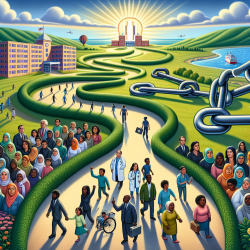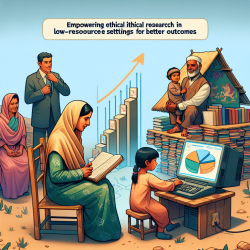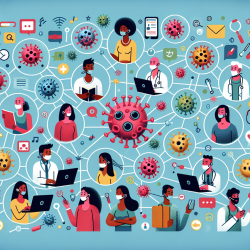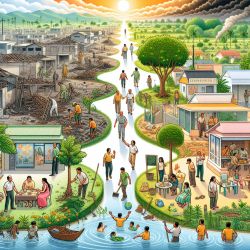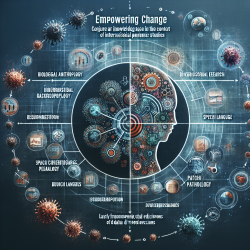Introduction
As practitioners dedicated to creating better health outcomes for children and communities, it is crucial to understand the barriers that internal migrants face in accessing essential health services, including HIV prevention and treatment. The research article "Within but without: human rights and access to HIV prevention and treatment for internal migrants" by Todrys and Amon (2009) provides a comprehensive analysis of these challenges and offers actionable insights for practitioners.
Understanding the Barriers
Internal migrants, individuals who move within their country's borders, often encounter significant obstacles in accessing health care services. These barriers are exacerbated by social, financial, and legal challenges, particularly in countries like China, Russia, and India. For instance, China's hukou system restricts access to public health services for migrants without official residence status. In Russia, registration requirements limit access to free medical care, while in India, logistical and linguistic barriers impede access to HIV prevention and treatment.
Implications for Practitioners
Practitioners can play a pivotal role in mitigating these barriers by:
- Advocating for policy changes that eliminate residence-based eligibility criteria for health services.
- Implementing targeted HIV prevention programs that address the unique needs of internal migrants.
- Collaborating with local and international organizations to develop culturally and linguistically appropriate health education materials.
- Facilitating access to health services by providing mobile clinics or transportation support for migrants.
Encouraging Further Research
While the research by Todrys and Amon provides valuable insights, further research is needed to explore innovative solutions and best practices for improving health care access for internal migrants. Practitioners are encouraged to engage in or support research initiatives that focus on:
- Evaluating the effectiveness of existing health programs for internal migrants.
- Identifying successful models of cross-regional health care linkages.
- Exploring the impact of social determinants of health on migrant populations.
Conclusion
By understanding and addressing the barriers faced by internal migrants, practitioners can contribute to a more equitable health care system that upholds the principles of human rights and non-discrimination. The journey towards universal access to health care for all, including internal migrants, requires a collective effort from practitioners, policymakers, and researchers.
To read the original research paper, please follow this link: Within but without: human rights and access to HIV prevention and treatment for internal migrants.
